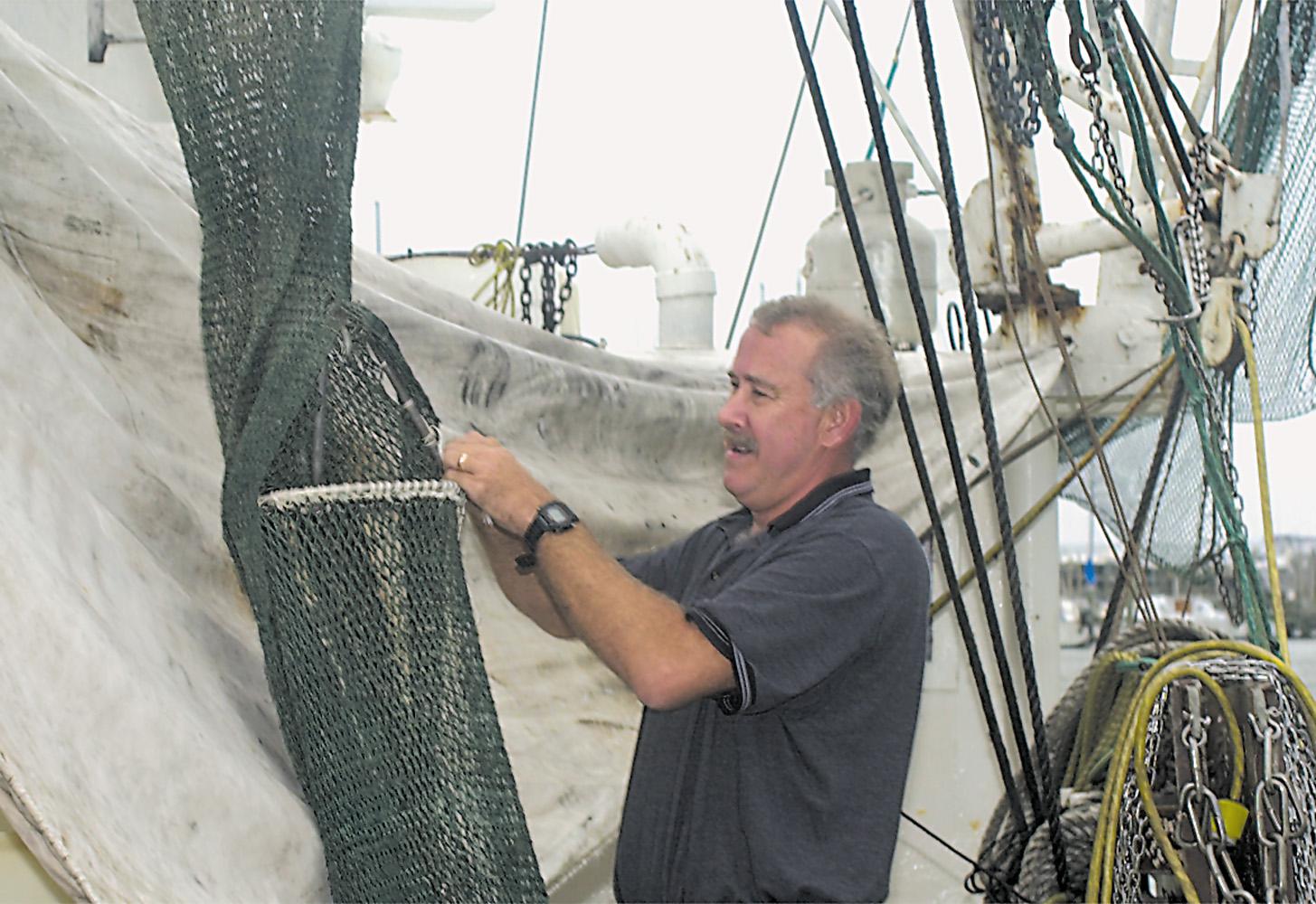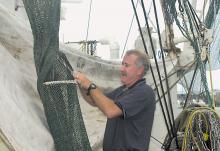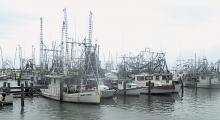Information Possibly Outdated
The information presented on this page was originally released on February 18, 2002. It may not be outdated, but please search our site for more current information. If you plan to quote or reference this information in a publication, please check with the Extension specialist or author before proceeding.
Study ensures health of state shrimp industry
By Charmain Tan Courcelle
BILOXI -- Any visitor to Mississippi's Gulf Coast can attest to the quality of its seafood, and scientists at the Coastal Research and Extension Center are working to ensure the continued availability of this food crop and the sustainability of Mississippi's seafood industry.
One such effort is led by marine resources specialist David Burrage, who is studying the inshore shrimp industry for the Mississippi State University Extension Service and the Mississippi Agricultural and Forestry Experiment Station.
Mississippi fishermen catch about 10 million pounds of shrimp (heads-on weight) every year. Burrage said this number does not include shrimp landed by smaller, inshore or nonresident commercial boats, which are not required to document their catch.
"It's common for a lot of inshore shrimp fishermen to go out every evening and then sell the night's catch from the back of the boat the next morning," Burrage said. "A lot of shrimp are bought and sold in this way, and the numbers can really add up."
For the past two years, Burrage has worked with the owners of 10 shrimp vessels to determine the size of the inshore shrimp industry. The fishermen keep track of the dates they depart and catch shrimp, the length of time they fished, where they caught shrimp and how many pounds of shrimp they caught.
"Shrimp don't grow at the same rate at the same location for the same amount of time," Burrage said. "If we're to manage shrimp fisheries properly, we have to know what we're working with."
Burrage said the work should help determine the impact of the inshore shrimp fishing industry on shrimp stocks and ensure the long-term viability of shrimp fisheries.
As part of this effort, Burrage also assesses harvesting gear used by the inshore shrimp fleet. He is determining the amount and type of bycatch (nontarget fish species) that are brought in and evaluating the ability of bycatch reduction devices, or BRDs, to limit the harvest of these fish.
"Inshore shrimp fishermen have not been required to use BRDs, but the issue of bycatch has gained prominence," Burrage said. "In the offshore shrimp industry, the accidental catch of juvenile red snapper, which are in poor shape numbers-wise, has driven the mandatory use of BRDs. Red snapper is not a problem for the inshore industry, but a lot of other fish are brought in with the shrimp haul, most of which are returned to the water dead.
"Consequently, state and federal fishery management agencies may mandate the use of BRDs for inshore shrimp fishermen in the near future."
BRDs are installed 8 1/2 to 12 feet from a net's tie-off rings. Burrage said location within a net is critical because of the potential for BRDs to lose shrimp catch.
"Where a BRD is in a net also determines whether it will be effective at 'getting rid' of nontarget fish," he added.
Burrage has found that installing a BRD 8 1/2 feet from the tie rings of a net reduces fish bycatch by 50 percent with no effect on the amount of shrimp harvested. Still, Burrage said he would urge state and federal management agencies to recommend, but not require, the use of BRDs for inshore shrimp fishermen.
"The majority of bycatch is composed of short-lived species that are not in danger of being overfished," he said. "Also, a lot of savvy fishermen are already using these devices voluntarily because it reduces the amount of time they have to spend separating shrimp from the catch and improves the quality of their shrimp. Making BRD use mandatory would require resources to be allocated for technology transfer."
Burrage received support for this project from the Mississippi Department of Marine Resources.





